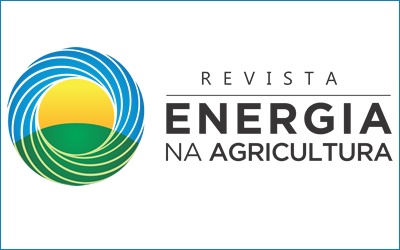Sugarcane fuzzy modeling FUZZY MODELING FOR EVALUATION OF PRE-SPROUTED SUGARCANE SEEDLINGS USING DIFFERENT DOSES OF POLYMERS AND IRRIGATION WATER DEPTH
DOI:
https://doi.org/10.17224/EnergAgric.2021v36n1p131-144Abstract
With the increase of the demand for biofuel, Brazil has been globally known as sugarcane productor. Seeking the reduction of costs of that culture, the system of pre-sprouted seedlings is a method that decreases the necessary raw material volume to the planting. Besides, the water is indispensable for the production of that seedling type and to supply that need it is possible to add polymeric to the substratum. Because of that, the present work aimed at analyzing, through a modeling fuzzy, the effects in the formation of pre-sprouted sugarcane seedlings of different polymeric doses mixed with the substratum and different water depth of daily irrigation, 60 days after the planting of the small stalks. Thus, it was used the mathematical modeling of an experiment that took place in a greenhouse in São Paulo State Technology College (Fatec). In the fuzzy model developed, the input variables were: polymeric and irrigation. And the output variables studied were: length of the aerial part, aerial part fresh mass, aerial part dry mass, roots fresh mass and roots dry mass. The analysis of polymeric and irrigation effects was accomplished through three-dimensional graphs and maps of the output variables outline. Such modeling aimed at having results also in several points that were not checked experimentally, making possible to analyze all sceneries of the vegetative and physiologic development of such seedlings. It was verified that variables related to the aerial part of the seedlings are positively affected for the addition of polymeric, while the mass of roots has the opposite behavior. In general, it is concluded that the area close to 3 g L-1 of polymeric mixed to the combined substratum with daily irrigation water depth among 10 to 15 mm had the largest answers of the studied biometrics variables. Since it is aimed to have a lower hydric consumption, it is recommended the dosage of 3 g L-1 of polymeric with 10 mm of daily irrigation.
Published
How to Cite
Issue
Section
License
Copyright (c) 2021 ENERGY IN AGRICULTURE

This work is licensed under a Creative Commons Attribution-NonCommercial-NoDerivatives 4.0 International License.
Esta revista proporciona acesso publico a todo seu conteúdo, seguindo o princípio que tornar gratuito o acesso a pesquisas gera um maior intercâmbio global de conhecimento. Tal acesso está associado a um crescimento da leitura e citação do trabalho de um autor. Para maiores informações sobre esta abordagem, visite Public Knowledge Project, projeto que desenvolveu este sistema para melhorar a qualidade acadêmica e pública da pesquisa, distribuindo o OJS assim como outros software de apoio ao sistema de publicação de acesso público a fontes acadêmicas.





